5+ Sample Implementation Business Plan
-
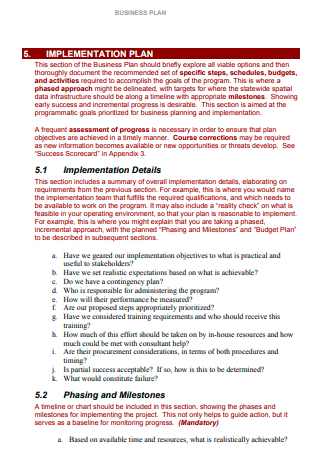
Implementation of Business Plan Template
download now -

Basic Implementation Business Plan
download now -
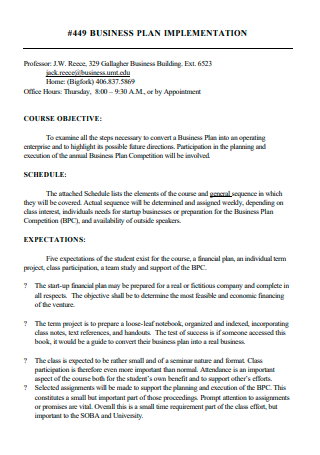
Implementation Business Plan Example
download now -
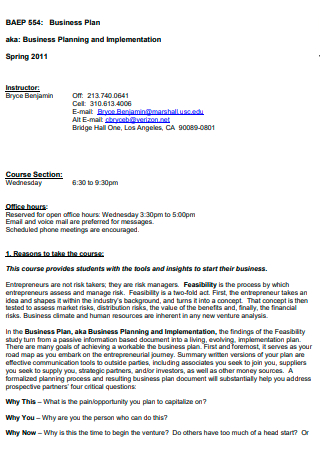
Printable Implementation Business Planning
download now -
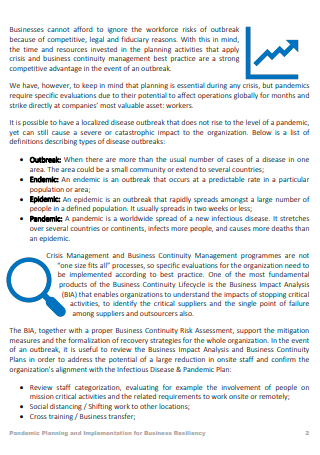
Implementation of Business Pandemic Planning
download now -
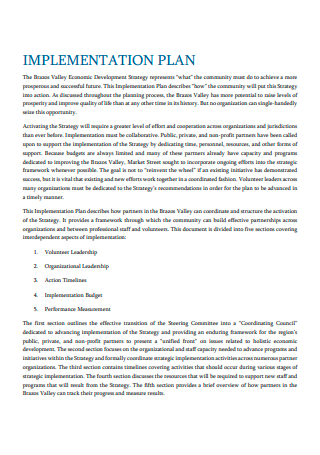
Implementation Business Plan in PDF
download now
FREE Implementation Business Plan s to Download
5+ Sample Implementation Business Plan
an Implementation Business Plan?
Benefits of Business Implementation
Types of Business Plans
Tips for Implementing Business Strategy
How to Implement a Business Project
FAQs
What is strategy implementation?
What is the significance of implementation?
What is an implementation blueprint?
What Is an Implementation Business Plan?
Business implementations, also known as a business implementation plan, are a series of stages that firms use to identify how to apply a strategic plan inside company activities to achieve one or more business plan objectives. This involves actions such as identifying responsibilities, creating significant dates or deadlines, defining communication techniques, and determining how to educate staff about strategic planning efforts. According to statistics, 67% of CEOs believe their firm is proficient at formulating strategy, while only 47% believe it is adept at implementing a plan.
Benefits of Business Implementation
Whether an organization is a startup or well-established, all workers are responsible for business execution. Implementation is executing a strategy or policy to make a concept a reality. To effectively implement a plan, managers must communicate clear goals and expectations and provide staff with the necessary tools to assist the organization in achieving its objectives.
Types of Business Plans
Every firm requires a detailed and planned action plan for efficient development and expansion. Plans for businesses outline a course of action and vary in format and substance based on the objectives. This article explains the many sorts of business plans and how to utilize them properly. The following business plans are the most frequently employed:
Tips for Implementing Business Strategy
Strategy, planning, and management skills are what makes a business work. Every business needs a plan and a strategy. But a strategic plan is only as good as the goals written to help make it happen. And goals are only as valuable as the people in charge of making them happen. This section will tell you how to put a business strategy into action.
1. Mission, Vision, and Values
Every business strategy begins with creating a mission, vision, and values statement. This crucial phase outlines the mission and objectives of the business. In addition, it establishes the values and guiding concepts that inform corporate decisions. Without vision clarity and articulation, companies risk becoming distracted and veering off track.
2. Strategic Plan
A strategic plan can be developed after the mission, vision, and values have been articulated. The plan outlines the measures necessary to accomplish the organization’s objective. Long-term (1-3 years) or short-term (1 year) strategic strategies are conceivable (3-6 months). Historically, strategic plans were created with a horizon of ten or even twenty years. Today, however, shorter-term plans appear to be more prevalent due to the fast-shifting market conditions.
3. Organizational and Departmental Goals
Business objectives are specified at the organizational level and include ambitious goals that the organization seeks to achieve. Typically, a CEO or executive-level manager is answerable to the board or other governing body for these objectives. Also, these significant objectives should be allocated to the next level of management following the formulation of organizational goals. Here, the command structure distributes tasks throughout the organization. As a CEO is responsible for attaining corporate objectives, so are their immediate reports, and employees assist a department manager in reaching departmental goals.
4. Employee Goals and Job Description
Employee goals should be derived from departmental objectives to share responsibility for completing tasks. The greater the number of individuals responsible for reaching objectives, the more efficient the execution. Additionally, an employee’s job description should include their goals and be updated annually to reflect the obligations associated with those goals. This assures accountability for goal achievement and the correctness of the job description. The annual update ensures that staff spends their time on things that contribute to global strategy.
5. Performance Appraisals
A well-structured performance management method integrates annual objectives into employee evaluation. Holding employees accountable ensures targeted employee performance and goal achievement at performance evaluations. Organizations that successfully create a vision, mission, and values statement and develop a strategic plan that drives goals throughout the organization have success implementing the project and engaging their employees because they can see how their work contributes to its mission.
How to Implement a Business Project
There are some processes involved in implementing a project, including some planning that must take place before execution. Here is a list of practical project implementation steps:
Step 1: Evaluate the project plan
In the initial phases of a task, it is advantageous to develop a plan that satisfies the expectations of management, clients, and key stakeholders. Before implementing a project, it is necessary to evaluate the program and ensure that everyone on the team is aware of its deliverables. The project manager may wish to host an introductory meeting to discuss everyone’s allocated responsibilities, the anticipated timeline, and any implementation-phase project milestones. This initial step can unite the project team and establish a collaborative work standard.
Step 2: Carry out the plan
With a plan in place and team expectations established, it is time to begin the project. Project managers should hold regular status meetings with their teams during this phase. Compare the project’s timeline to the usual schedule and monitor the team’s resources to ensure they have everything they need to finish the task effectively. Communication is crucial at this phase to keep the team informed of the project’s priorities. It is also essential to deliver regular progress updates to clients and key stakeholders to maintain transparency during this process.
Step 3: Make alterations as needed
A project manager may need to make adjustments during the implementation phase of any project, such as accommodating different customer requirements or maintaining the project’s scope. Adjust as needed, relying on the project plan to uncover potential solutions. Continue communicating with the team and asking questions to understand where additional support is required. Be willing to allocate other personnel or resources if a project deviates from the plan. Change is a fact of life for many projects, and the efficacy with which a project manager implements these changes can affect the result of the project.
Step 4: Analyze project data
Throughout the project’s implementation phase, it is essential to continuously examine data to assess its success relative to its initial projections. You can use specialized project management software or a manual system to generate staffing, resources, and budget data. Examine the data to evaluate if there are any more areas where it would be advantageous to adopt further changes to assist a team in meeting the initial project requirements. If so, return to the previous stage and make the necessary modifications while collecting additional data to evaluate the project variables.
Step 5: Collect feedback
After the team has completed the project’s deliverables, a few crucial stages remain. Collect input from the project team, clients, and stakeholders regarding the project’s outcome, assessing which aspects went as planned and which areas the team could do better. To obtain this feedback, you can have direct interactions with persons participating in the project, or you may find it helpful to distribute a brief survey requesting comments. This phase can assist businesses in making continuous improvements to ensure future project success.
Step 6: Provide final reports
In the final portion of the implementation phase, deliver reports to the project team, clients, and stakeholders detailing the project’s performance relative to the estimated budget and schedule. Describe any instances where modifications were required to maintain the project’s scope and budget. These reports contain crucial information regarding the project’s budget, timeline, and resources. This step allows firms to reflect on the project’s successes and identify any necessary future changes, which can have long-term advantages for the project management cycle.
FAQs
What is strategy implementation?
Strategy implementation refers to implementing plans and strategies to achieve the organization’s long-term objectives. It translates the chosen design into the organization’s motions and actions to attain its objectives.
What is the significance of implementation?
According to research, implementation quality has a crucial role in producing results. If a program is implemented poorly or somewhat well, it is doubtful that its objectives will be met or the outcomes will be less critical. With superior implementation, success is more likely to occur.
What is an implementation blueprint?
A methodology for prospectively designing strategies can reveal a formal implementation blueprint, which Powell et al. define as a plan incorporating all goals and techniques, the scope of change, a timetable and milestones, and performance/progress measures.
Developing a business plan for execution could be as tricky as the implementation itself. There are some factors to keep in mind. Planning, resource allocation, and goal setting are a few of them. However, having the proper disposition and a positive mindset could be the key to achieving the desired success in a risky endeavor.
